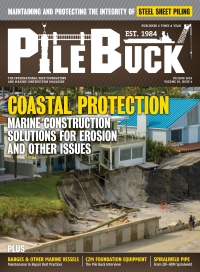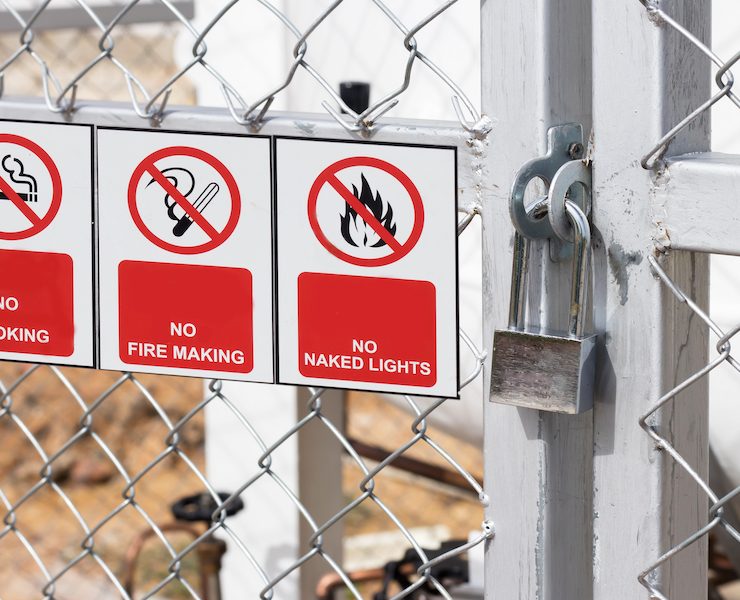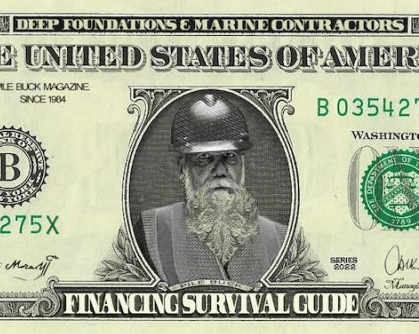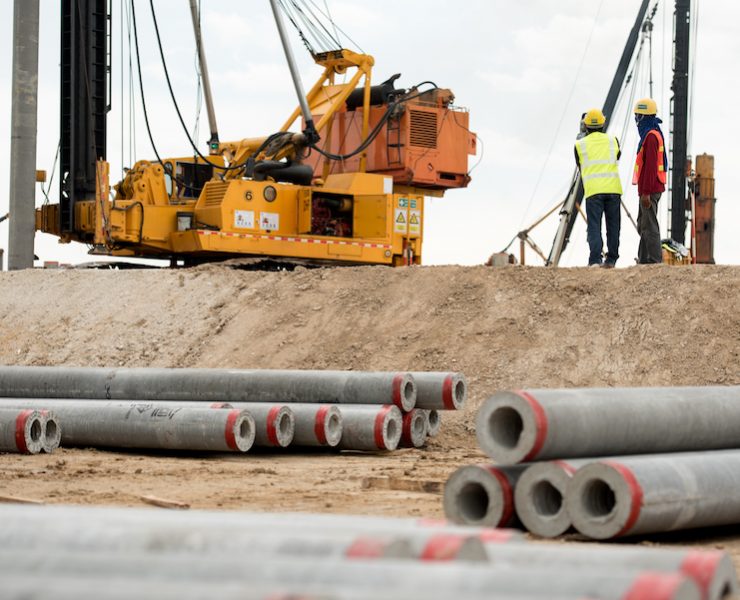What the Heck is a “Type II” Differing Site Condition?
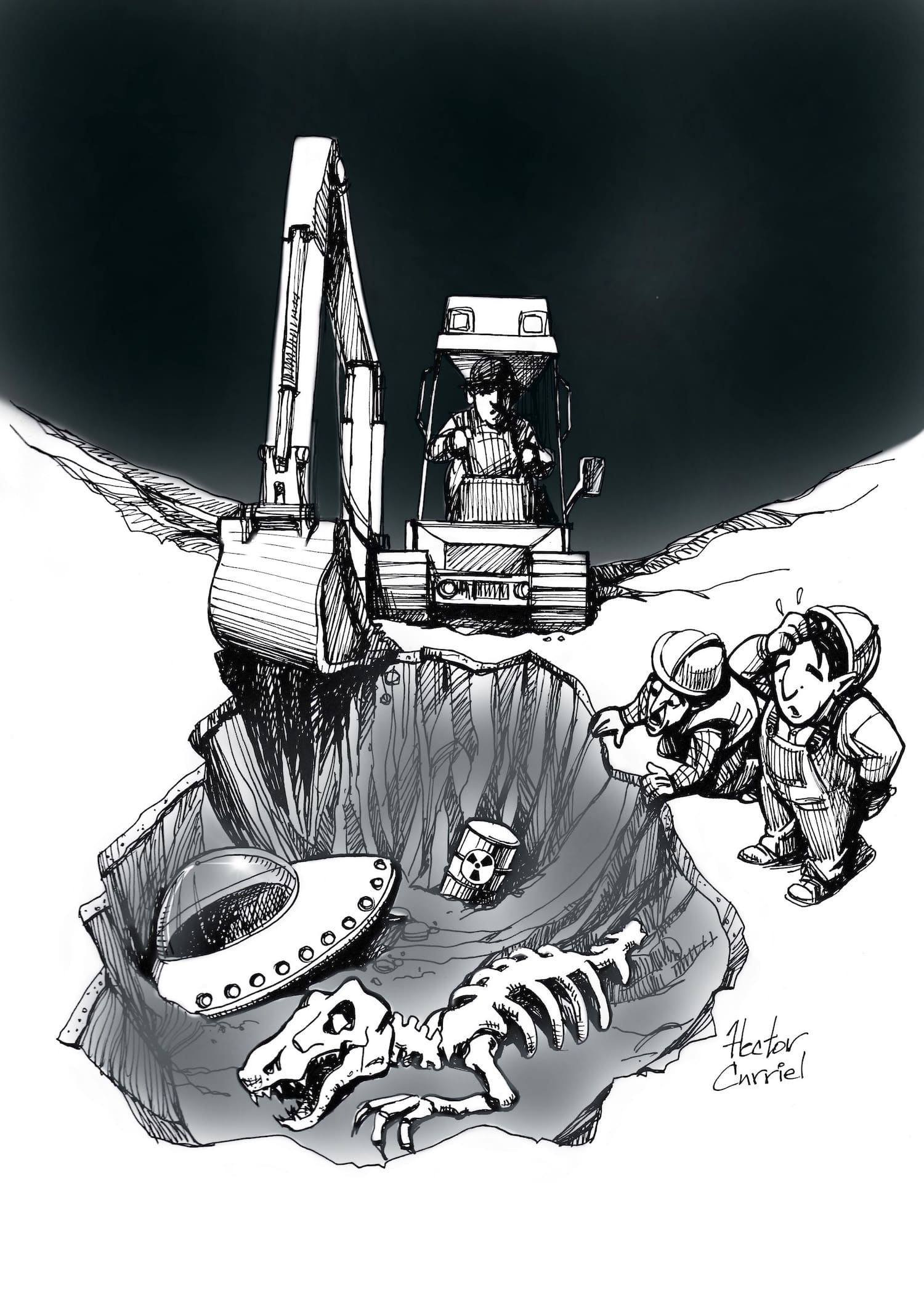
View the complete article here.
 Any engineer or deep foundation contractor will invariably face changed soils conditions. There is a bevy of Federal and State court cases, books, and war stories about when, expecting bedrock at 30 feet, the project team encounters “running sand”, baymud, or other gremlins and costs skyrocket. The traditional way to show a differing site condition is to compare the indications in the project soil boring logs with the material encountered. Simple enough, allegedly. That we know is a “Type I” differing site condition.
Any engineer or deep foundation contractor will invariably face changed soils conditions. There is a bevy of Federal and State court cases, books, and war stories about when, expecting bedrock at 30 feet, the project team encounters “running sand”, baymud, or other gremlins and costs skyrocket. The traditional way to show a differing site condition is to compare the indications in the project soil boring logs with the material encountered. Simple enough, allegedly. That we know is a “Type I” differing site condition.
But then there is the mysterious “Type II” DSC, the exotic condition that is not proven by comparison to the project geotechnical report, but to universal assumptions in general. Sounds abstract, and it is.
Before citing court cases, I boil the distinction down this way:
- A Type I DSC involves an encountered subsurface condition that differs materially from the conditions “indicated” in the project’s geotechnical report and contract documents.
- A Type II DSC is everything else you encountered below ground that resulted in reasonably unexpected costs from something really unusual. That is, “Type II” is basically a catch all.
Typical examples of Type II are things like, encountering dinosaur bones, ET’s buried alien spaceship in Area 54 or toxic material where otherwise the borings remain valid. Keep an open mind, says Western Well Drilling, Inc. v. US, 96 Fed Supp 377 (ND Cal 1951), where the contract documents indicated rock drilling was to be encountered, but it turned out to be a near impossible and deep rock formation. The contractor was awarded a Type II: “The term ‘unusual’ does not refer to a condition which would be deemed a geological freak but rather a condition which would not be anticipated by the parties to the contract in entering into their initial agreement.”
Mind you, the few cases finding a “Type II” Differing Site Condition do not express or define a Type II this way. The formula definition is usually within the project general or special conditions, and invariably is either verbatim or parallel to the standard DSC clause required in Federal and federally-funded projects. Here is 23 CFR 635.109, but the same language is found at 48 CFR 36.502 and CFR 635-2, as well as most state public contract codes – I’ve highlighted the “Type II” language:
Differing site conditions. (i) During the progress of the work, if subsurface or latent physical conditions are encountered at the site differing materially from those indicated in the contract or if unknown physical conditions of an unusual nature, differing materially from those ordinarily encountered and generally recognized as inherent in the work provided for in the contract, are encountered at the site, the party discovering such conditions shall promptly notify the other party in writing of the specific differing conditions before the site is disturbed and before the affected work is performed.
So, as a hint for your “Type II” DSC notice, it must spell out:
- “We have encountered a subsurface condition of an unusual nature”
- These unusual conditions differ materially from those ordinarily encountered”
- “ These unusual conditions differ materially from those generally recognized as inherent in the work provided for in the contract”
- Then, be as specific as you can in describing the condition encountered, and show why it is unusual, and not ordinarily encountered or inherent in the work.
- Add always, “We are requesting the owner initiate its required investigation under Section __ of the contract –. This highlights the usual owner duty “Upon written notification, the engineer will investigate the conditions…” (Later, when the Owner ignores you and does a skeletal, window dressing investigation or none at all, you cite Metcalf Constr. Co. v. United States, 742 F.3rd 984 (Fed. Cir. 2014) that the owner’s failure to investigate and respond is a breach of contract, making your DSC claim now double barreled).
Site investigation is a real issue for showing not just the Type II condition was unforeseen but that the contractor’s pre-bid site inspection was reasonable in scope. If the contractor did not do a pre-bid inspection, then the contractor must show had it inspected the condition would not been discovered. Stuyvesant Dredging Co. v. US, 834 Fed. Cir. 1576 (Fed. Cir. 1987).
Some Legalese – cases helping your team when your notice is challenged
Luckily or logically, court cases say that the form of notice is not important so long as notice is reasonably imparted. Brechan Enters., Inc. v. U.S. (1987) 12 Cl. Ct. 545, 549: “[n]otice does not need to be in any specific format; it only needs to show the existence of the condition.” Federal case law also states that actual knowledge by the owner of a differing site condition is sufficient to trigger the owner’s duty to investigate and preserve the claim, even where the contractor either only gave oral notice or flubbed up the formal letter, either too weak or arguably too late, so long as the owner is not prejudiced. Hoel-Steffen Construction Co. v. United States, 456 F.2d 760, 767-8 (Fed. Cir. 1972): “It is enough, under the suspension clause, that the proof demonstrate that the defendant [the government] knew or should have known that it was called upon to act [i.e., investigate the DSC]”. Beware though – some states, such as Washington, do not follow the Federal approach and hold failure to strictly comply with notice content and deadline specifications are a waiver and forfeiture of the claim.
And, make sure your construction attorney is aware of US Department of Transportation, Geotechnical Guidelines, Circular 15, which instructs Federal Contracting Officers, “…unless failure to give notice prejudices the owner, a claim will not be barred.”
Still, better safe than sorry – an immediate, same day sledge hammer letter tracking the DSC clause itself somehow gets understood quicker than a more subtle, polite notice. Keep writing. Ask for a meeting, then another – make the owner and project engineer “work the problem” with you, like the Ed Harris character in the film Apollo 13. The best practice is to have in the “re” line “Notice of Differing Conditions” along with citation to the contract clause section. That said, a good question is, must one decide right off and state in the DSC notice whether what is claimed is a Type I or Type II.
The Basic Reason for the Differing Site Condition Clause
When making a DSC claim, keep in mind the underlying premise of a differing site condition clause, to take much of the “gamble” out of bidding, reduce contingencies in bids that harm the public fisc, and promise to adjust the contract where conditions do differ. Here is how The U.S. Department of Transportation’s published “Construction Administration Core Curriculum Manual” summarizes the purpose behind the mandatory inclusion of a DSC clause in federally funded contracts:
“The STURAA of 1987 required FHWA to develop standardized changed condition clauses to be included in all FA construction contracts unless prohibited or otherwise provided for by State law. The law required the clauses to establish the equitable adjustment of a contract in the event of a) differing site conditions; b) suspensions of work ordered by the STA; and c) material changes in the scope of the work.
In theory, the use of the standardized changed conditions clauses takes several risks out of the bidding process. Since bidders do not need to evaluate their costs of doing geotechnical work or include contingencies for unforeseen site conditions, owners benefit from more competitive bidding. And finally, the
use of standardized changed condition clauses provides some uniformity for contractors pursuing work in several states.
Guidance: The standardized changed condition clauses in 23 CFR 635.109 must be included verbatim in all contracts unless State statue prohibits their inclusion. With the Division Administrator’s approval, an alternative clause may be developed by the STA that either a) includes all the required sections of 23 CFR 109 but is structured to fit the STA’s standard specifications; or b) fulfills the requirements of State statute.”
Conclusion
Contracting below ground is getting harder, not easier. The more design and pile driving technology improves and has WEAP and Wave analyses or software modeling, the more owners expect all kerfuffle’s to disappear and be solved for no cost. So long as these clauses exists, infrastructure contractors need to be alert the day they break ground for surprises, and let the owner know. It can’t hurt, and usually, will maximize your contract rights. Why not?
View the complete article here.
Contractors should provide a notice stating they've encountered a subsurface condition of an unusual nature, differing materially from typical conditions, and specify why it is unusual; a clear, immediate, and detailed notice helps trigger the owner's duty to investigate under the contract.












